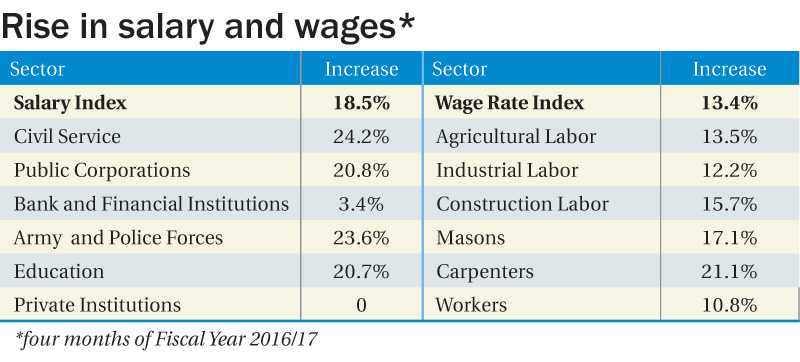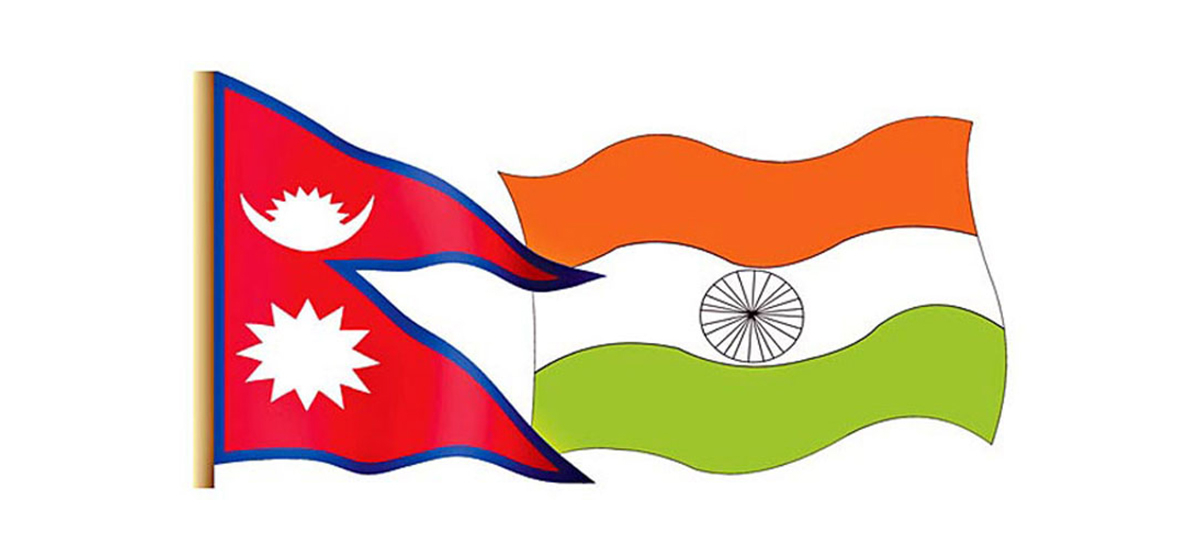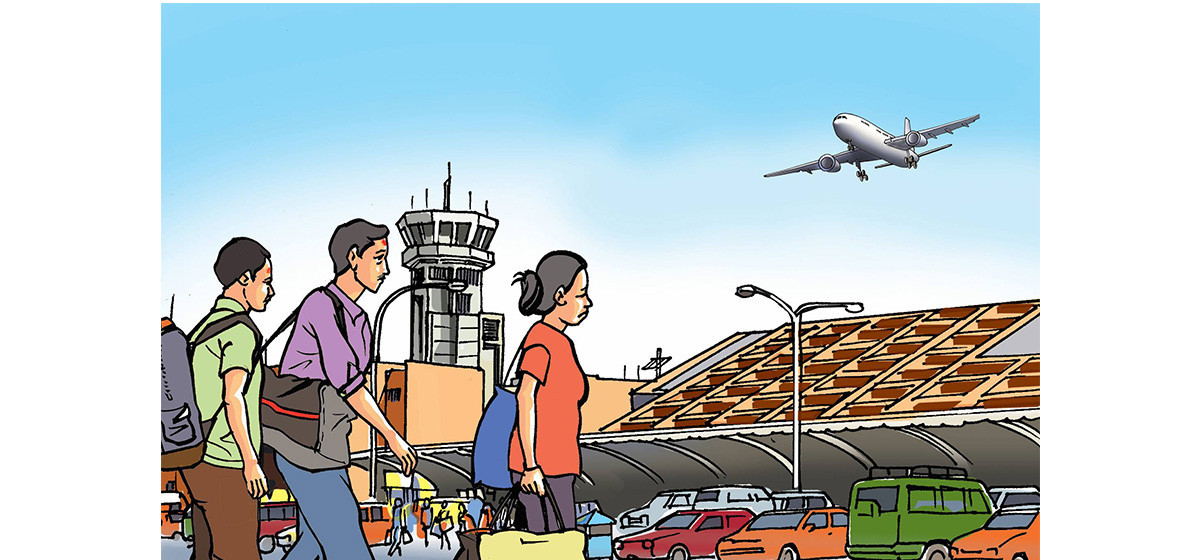
OR
Hike in civil sector salary drives up salary, wages indices
Published On: December 31, 2016 12:09 PM NPT By: Republica | @RepublicaNepal

Private sector remunerations continue to remain stagnant: NRB data
KATHMANDU, Dec 31: The overall salary and wages index jumped 14.4 percent in the first four months of the current fiscal year, compared to the 8.1 percent growth seen in the corresponding period of Fiscal Year 2015/16.
Excepting for employees of private companies, wages and salary in all sectors went up by double digits during the review period.
The rise in the index was mainly due to a government decision to raise the salary of civil service employees which also puts pressure on other sector to raise salary and wages, according to observers.
According to data from Nepal Rastra Bank (NRB), the salary of civil service sector employees went up by the highest amount -- by 24.2 percent in Fiscal Year 2016/17. The government announced an increase of salary of civil employees by 25 percent through the budget speech for Fiscal Year 2016/17.
The salary of army and police personnel jumped 23.6 percent (year-on-year) on mid-November. Likewise, remunerations of staff of public corporations went up 20.8 percent in the review period.
The salary index of the education sector also climbed 20.7 percent while there was an increment of 3.4 percent in the salary of employees of bank and financial institutions as of mid-November compared to a rise of 2.3 percent in the corresponding period of the last fiscal year.
The salary of employees of private institutions continued to remain stagnant in the period.
According to the data, no increment has been seen in the salary of staffs employed by the private sector in the last two years.
The wage rate also went up 13.4 percent, according to NRB statistic.
Carpenters saw the highest increase in their wage as their wage index climbed 21.1 percent during the review period.
The next big jumps in wages were those of masons and construction laborers as their wage indices rose 17.1 percent and 15.7 percent respectively. The overall wages index of laborers increased by 10.8 percent.
Agriculture-sector laborers and industrial laborers also saw double-digit rate rises in their wages during the review period. Their wage indices went up 13.5 percent and 12.2 percent respectively.
Experts say a shortage of laborers and workers in the wake of the rising outflow of migrant workers contributed to the rise in the wages index in recent years. An increase in demand of laborers for reconstruction of structures damaged by the 2015 earthquakes may also have contributed.
The rise in salary and wages is also contributing to a price rise, according to observers.
“If you closely track inflation during the four months, the price of non-tradable goods like hospitality, transport and other service sectors have gone up significantly,” Nara Bahadur Thapa, Executive Director at Nepal Rastra Bank (NRB), told Republica. “With more money at their disposal, people whose earnings have gone up are tempted to spend on products of such sectors. This helps push up prices,” he said.
You May Like This

Private sector leaders urge govt to up budget for infra sector
KATHMANDU, May 9: Private sector leaders have urged the government to prioritize infrastructure development in the upcoming budget for Fiscal Year... Read More...

Hike in electricity tariff will hit industrial sector hard: FNCCI
KATHMANDU, Feb 7: The Federation of Nepalese Chamber of Commerce and Industries (FNCCI) has objected to a proposal to raise electricity... Read More...

Students demonstrate against MPS' salary hike
KATHMANDU, Nov 23: Various 13 student organizations affiliated to different political parties have demonstrated in the capital city against the... Read More...




Just In
- Weather expected to be mainly fair in most parts of the country today
- 120 snow leopards found in Dolpa, survey result reveals
- India funds a school building construction in Darchula
- Exploring opportunities and Challenges of Increasing Online Transactions in Nepal
- Lack of investment-friendly laws raises concerns as Investment Summit approaches
- 550,000 people acquire work permits till April of current fiscal year
- Fixing a win by outlawing dissent damages democracy
- MoHP cautions docs working in govt hospitals not to work in private ones












_20220508065243.jpg)
Leave A Comment